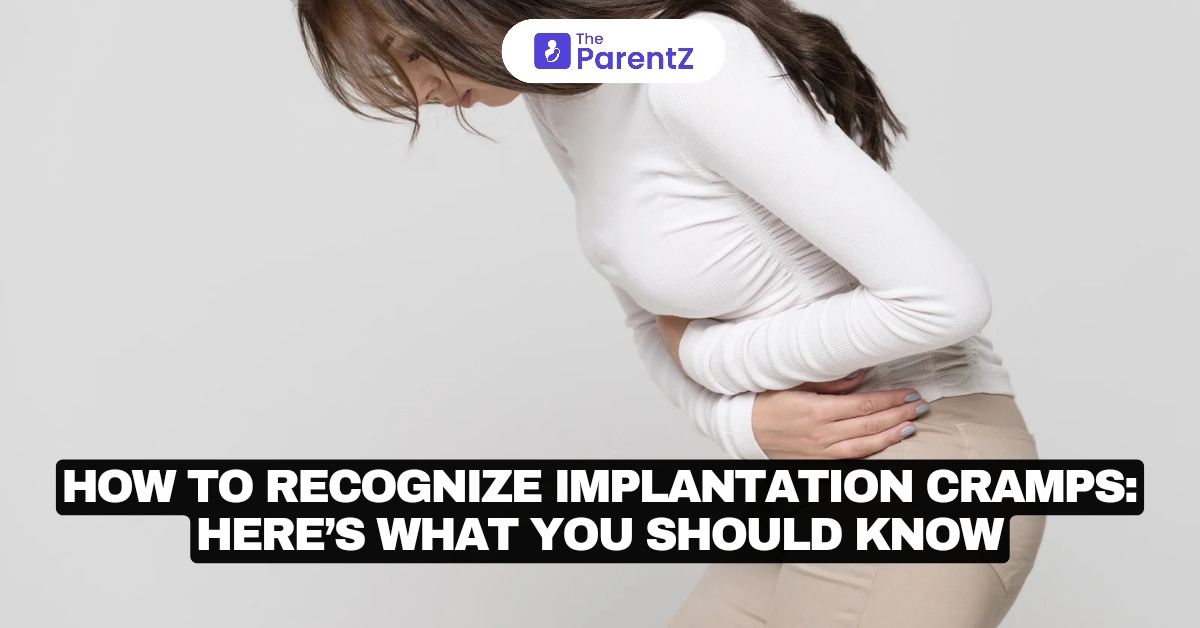Implantation cramps are one of the most common early signs of pregnancy. It occurs when a fertilized egg attaches itself to the uterine lining.
According to the American Pregnancy Association, almost 25 percent of women report experiencing implantation cramps and bleeding during early pregnancy.
Read this article to learn about implantation cramps and how they are different from abdominal cramps to help women in their early pregnancy confirmation.
Understanding Implantation Cramps: What Is It?
Implantation cramps are similar to mild, abdominal pains that occur when the fertilized egg attaches to the lining of the uterus. It typically occurs 6-10 days after ovulation, almost near the time when the menstrual cycle would normally start. Such implantation cramps are the early signs of pregnancy.
Characteristics
The common characteristics of implantation cramps include
- It occurs usually about 6-10 days after ovulation, which is often a week before your expected period.
- The cramps are less mild and intense compared to menstrual cramps. It may feel like tingling or pulling sensation.
- Implantation cramps generally last for some minutes to a few hours. However, some women might experience it for 1-3 days.
- These cramps primarily occur in your lower abdomen or lower back area.
Other Signs to Notice
Implantation cramps are accompanied by other early signs of pregnancy, including
- Implantation bleeding is indicated by mild, light spotting or bleeding, often pink or brown, which may last for 1-2 days.
- Breast tenderness
- Fatigue due to increased estrogen levels
- Nausea or morning sickness
Difference Between Implantation Cramps And Other Kind of Pain
You might experience cramps due to various reasons including menstruation, digestive issues or ovulation. Therefore, it is important to understand the actual difference between implantation cramps and other kind of pain to help identify the actual reason.
Menstrual Pain:
Menstrual cramps are typically more intense and effects lower abdomen, lower back, and thighs. The pain typically begins 1-2 days before period and last for several days.
Ovulation Pain:
Ovulation pain typically occurs mid-cycle, i.e., 14 days before your next period. The pain is either sharp or dull on one side of the abdomen.
Digestive Concerns:
Andmomical discomfort such as gas, bloating, or indigestion may produce pain similar to cramps. In such cases, you can also notice other signs like burping or bowel movements.
When Should You Take A Pregnancy Test?
If you suspect implantation cramps, you can wait until your missed period to take a pregnancy test for accurate results. Home pregnancy tests work by measuring the hCG levels, which significantly increase after implantation. Therefore, a pregnancy test before a missed period may not be accurate as the hCG levels might not have reached a delectable level.
When Should You Seek Medical Attention?
Though implantation cramps are mild and last for a short period, you may require immediate medical attention if
- You experience severe and persistent pain, which might be indicative of an ectopic pregnancy or other underlying conditions.
- You notice heavy bleeding with severe cramps that may suggest a miscarriage.
- Fever and chills might indicate an infection.
Takeaway
Implantation cramps are a common sign that indicates an early pregnancy. The timing, intensity, and other accompanying symptoms can help you differentiate between implantation cramps and other types of pain. If you notice anything unusual, you must consult your healthcare provider to avoid any risk of complications.








Be the first one to comment on this story.